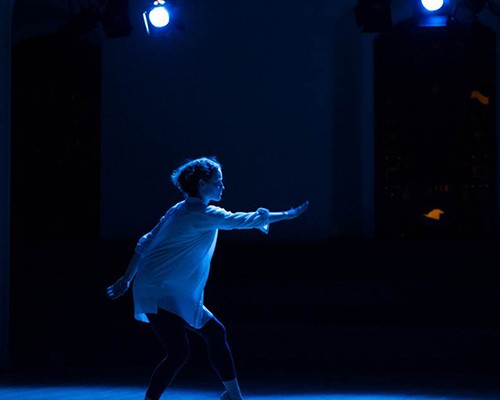“It’s a Woman’s World” is a celebration of the women artists who deserve just as much esteem as their male counterparts. Beginning with Theater Fairfield’s production of Rachel Crothers’s play “A Man’s World,” the three-part performance series curated by Dr. Martha LoMonaco, professor of visual and performing arts, was concluded on Sunday evening with “Incarnations.”
“Incarnations (Sketches for a Longer Work)” was an intriguing performance that incorporated both dance and physics through the collaboration of Emily Coates and Sarah Demers. Coates is the Director of Dance Studies at Yale University and has performed internationally with New York City Ballet, while Demers, an associate professor of physics at Yale University, is known for her work on the ATLAS particle physics experiment at CERN, the European Organization for Nuclear Research.
Coates and Demers, who have been working together since 2011, paired together in order to expand the science curriculum for non-science majors at Yale, creating a science-art video called “Three Views of the Higgs and Dance” in 2013. This video, which was screened at the Quick Center, appropriately summarized their science-and-dance-infused performance.
The event began on a leisurely note, with the two performers discussing their two disciplines, as if they were separate. Coates began a discourse on the history of the pirouette, the famous spin move in ballet, after which Demers began discussing the science behind the movements. Coates then demonstrated the act.
After this demonstration, science and dance came together in a more tangible way, as Coates began to dance and Demers, while sitting on a stool watching, explained the science behind the dancer’s movements. She spoke quickly about the torque, gravity, friction, force and inertia at work while Coates was performing.
“It’s hard to keep track of all the physics that is happening so rapidly,” Demers added with a laugh, in allusion to how quickly she had to speak to mention all of the scientific aspects in time with the dancing.
Hearing the science behind the movements was strangely soothing, and added an element of understanding that is not usually present during a dance performance. Typically, when dance is performed, the idea of making it almost otherworldly is emphasized; however, in this performance, the opposite was true. Rather than focusing on the aestheticism of dance, its kinesiology was explored.
Speaking on this portion of the performance, Diandre Clarke ‘18, who has been a dancer for the past five years, commented, “It was different, from a dancer’s perspective, to think of dance as a science. Usually you just think of dance as an art.”
“I want to inspire people who haven’t thought about physics as something that’s exciting and interesting and engaging before to think more about physics,” said Demers, “and if someone doesn’t have any exposure to dance … to start to see dance in a different way as well … Our goal isn’t to inspire other people to do what we do, but to inspire some interest and respect for our disciplines.”
“We are encouraging people to think cross-disciplinarily,” added Coates.
After the dance, it was Demers’ turn to take center stage. Standing in front of a white board and writing out equations as she spoke, Demers talked about the science of movement as Will Orzo, the musical director of the show, emerged and demonstrated her points by pushing and carrying her across the stage.
Demers also spoke on physics, while Coates analyzed her hand motions.
The performance concluded with a screening of Coates and Demers’ video “Three Views of the Higgs and Dance.” This video included interviews with multiple scientists about the Higgs boson particle and Higgs field, crucial elements of the particle physics theory.
This video displayed the beauty of human motion and science, coming together as one.
The video portion of the show was popular among audience members.
Sophomore Billie Watson commented that she “got a little lost during the physics talk, because [Demers] was talking very fast. I didn’t understand until they played the video, and maybe that’s what they were trying to do.”
Sophomore Katie Barrera agreed, stating, “I like how they did the dance aspect, and the video component brought home what they showed in the dance.”
Speaking on the larger themes of “It’s a Woman’s World”, Coates said, “In the dance world, there’s still advocacy to be done for women leadership in dance. In science, there’s advocacy to be done for the representation of women in science; we need more women scientists. It feels like Marti hit on something that’s also important to Sarah and me, thinking about advocacy for women in our respective disciplines.”


Leave a Reply